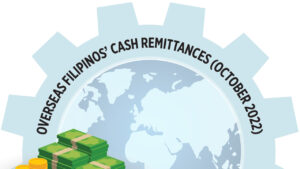The utter inutility of mandatory mask wearing

Had a friend that recently took a plane trip. Finally being able to sit down after going through the interminable boarding procedures, lengthened by even more inane COVID-19 protocols, a stewardess approached her and told her to put on her mask.
Why? Because some guy, 30 feet away, said he was uncomfortable seeing her bare face. My friend argued back saying the request was ridiculous, particularly as everybody had to take off their masks anyway during the flight when the meals are served.
And she’s right: public mandatory mask rules are deranged and absurd.
Science bears this out: “The only two sizeable studies evaluating masks in the context of COVID-19 failed to demonstrate statistically significant reductions in confirmed viral transmission either for surgical masks (one study) or for cloth masks (the other).
“The first study, conducted from April to June 2020 in Denmark, found that 42 (1.8%) of 2,392 subjects provided with more than four dozen three-layer surgical masks reported SARS-CoV-2 infection, versus 53 (2.1%) of 2,470 in the con-trol group. That is a difference of only 0.3%, which is not statistically significant (p = 0.38). Although adherence to masking instructions was imperfect, an analysis of only those self-reporting that they did adhere to the protocol also failed to find a benefit.
“A much larger study in Bangladesh examined the ability of masks to reduce community-wide infection rates, including as source control. Six hundred cluster-randomized villages were studied between November 2020 and January 2021.” Again, the findings indicate that mask mandate benefits were practically non-existent. “Also of interest, five-month follow-up surveillance revealed that proper mask use dramatically declined within intervention villages from approximately 28% to 14%, raising questions about long-term feasibility.” (See “How Effective Are Cloth Face Masks?,” Cato Institute, Winter 2021/2022, http://bit.ly/CATO_FaceMasks; see also “Modeling the filtration efficiency of a woven fabric: The role of multiple lengthscales,” De Anda, Wilkins, et al., AIP Physics of Fluids, March 2022, http://bit.ly/AIP_FaceMasks)
And varied country experiences corroborate the foregoing: South Korea, New Zealand, Japan, Hong Kong, Scotland, and New Mexico and Los Angeles in the United States all saw COVID cases rise following the strict applica-tion of mask mandates. On the other hand, England, as well as Texas, Iowa, and Florida saw cases either maintained or lowered upon the lifting of mask mandates.
For more detailed information on the insanity of mask mandates, Ian Miller’s book, Unmasked: The Global Failure Of COVID Mask Mandates (Post Hill Press, January 2022) is a very good resource.
In fact, masks could actually be doing more harm than good. And this is contrary to those saying that nobody knew of this at the pandemic’s beginning. The Federalist already reported back in November 2020 (“Many Studies Find That Cloth Masks Do Not Stop Viruses Like COVID”) that:
“‘Maskne,’ face rashes, ‘mask mouth,’ and sore throats point to bacteria building up in masks due to the humid, stagnant air and changes in the oral microbiome, which can cause systemic inflammation and downstream disease. A 2015 study found that healthcare workers who wore cotton face masks suffered from significantly more respiratory illness than those who wore surgical masks.
“Previous research conducted by Fauci himself found that the main cause of death in the 1918 Spanish flu pandemic was from bacterial pneumonia. Inhaling higher bacterial counts with every breath sounds like an especially bad idea.
“The WHO specifically recommends against wearing a mask while exercising because ‘masks may reduce the ability to breathe comfortably. Sweat can make the mask become wet more quickly which makes it difficult to breathe and promotes the growth of microorganisms.’”
Of course, pro-maskers regularly bring this up: “If face masks weren’t effective, then why do doctors wear masks when performing surgery?”
The problem with this “argument” is that public settings are obviously not operating rooms. Doctors wear face masks in the operating room’s sterile environment because of the necessity to protect the cut-up patient who now has an open wound that could easily get infected by germs from the doctor’s mouth and nose. Another reason, though secondary, is to protect the doctor from possible splashes when he is cutting up the patient.
And yet this is not the situation being contemplated in relation to mandatory mask requirements with the ostensible objective of controlling COVID-19 spread: the general public’s lack of training with regard to mask-wearing, the feasibility of long-term mask-wearing, the quality and cleanliness of the masks, the extent to which masks can actually stop transmission from one person to another, the physical closeness of people to each other (including population density of the areas involved), air circulation quality, and so on are all clearly different to the circumstances inherent in an operating room.
The point is that, like vaccination, mask wearing should be an individual decision based on personal responsibility. But to force people to wear masks under risk of penalty is simply unjustified and arbitrary government over-reach.
JEMY GATDULA is a senior fellow of the Philippine Council for Foreign Relations and a Philippine Judicial Academy law lecturer for constitutional philosophy and jurisprudence
https://www.facebook.com/jigatdula/
Twitter@jemygatdula




